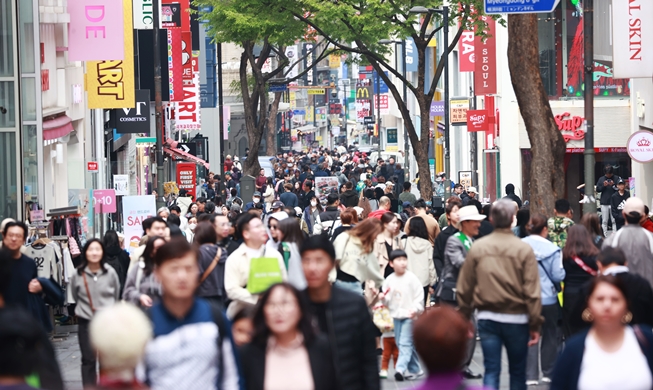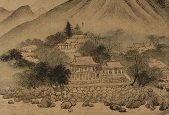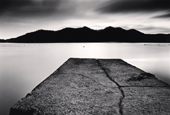-
 Korea.net's 24-hour YouTube channel
Korea.net's 24-hour YouTube channel- NEWS FOCUS
- ABOUT KOREA
- EVENTS
- RESOURCES
- GOVERNMENT
- ABOUT US
Such a scene depicted in landscape paintings is amazingly calm and peaceful, and it makes the summer heat disappear. The kinds of utopia described in landscape paintings have been one of humanity's favorite subjects to paint, regardless of time and place. In East Asia, the landscape symbolizes an ideal world of high spirits and is considered a place where people grow virtuous and enjoy peace and prosperity.
A special exhibition on the utopias sought out in East Asian landscape paintings is currently taking place at the National Museum of Korea in Yongsan District, Seoul. The "Landscapes: Seeking the Ideal Land" exhibition features 109 works from museums across the world, including many from the collection of the National Museum of Korea itself, as well as from the Metropolitan Museum of Art, the Shanghai Museum and the Kyoto National Museum.
In particular, the 8.5-meter "Mountains and Rivers Without End"/ "江山無盡圖," by Yi Inmun (1745-1821), and "Being in Nature is Better Than Holding Official Rank"/ "三公不換圖," by Kim Hongdo (1745-?), show how scholars from the Joseon Dynasty (1392-1910) dreamed about utopia and how it was described in landscape paintings.

'Being in Nature is Better Than Holding Official Rank' (1810), by Kim Hongdo, is painted on silk. (photo courtesy of the National Museum of Korea)

Visitors admire 'Mountains and Rivers Without End,' by Yi Inmun. (photo: Jeon Han)




Details of the 8.5-meter 'Mountains and Rivers Without End' (18th century), by Yi Inmun. The painting is divided into four parts for easier online viewing. (photo courtesy of the National Museum of Korea)
Forty-two of the pieces are landscape paintings from China and Japan. There are works by renowned Chinese landscape painters, including some by Wen Zhengming (1470-1559) and Dong Qichang (1555-1636). The work "Ode on Returning Home"/ "歸去來圖," which portrays Tao Yuanming (365-427), an Eastern Jin Dynasty poet returning home after leaving his government post, is one of the most famous Chinese paintings owned by the Metropolitan Museum of Art in New York. "Peach Blossom Spring of Wuling" by Tamioka Tessai (1837-1924), from the collection of the Kyoto National Museum, is a folding screen composed of two paintings.
The exhibit is organized by theme. The first part deals with one of the most popular subjects in landscape painting, the "Eight Views of the Xiao and Xiang Rivers," in which rustic scenery from traditional China is idealized. The painting is of eight scenes in Hunan Province, China, where the Xiao and Xiang rivers converge to create the Dongting Lake. The concept of "eight views" has led to a trend among painters where they draw eight scenic spots together as a single work.
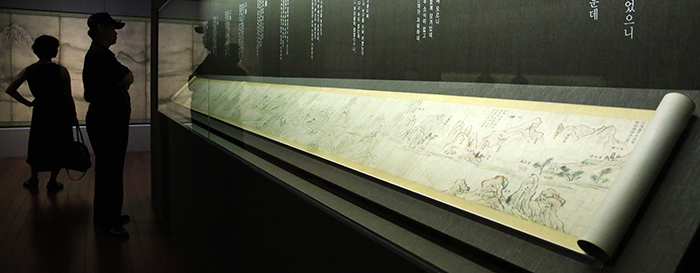
'Nine-bend Streams of the Wuyi Mountain' (1753) is by Joseon-era painter Kang Se-hwang (1713-1791). (photo: Jeon Han)
The second part of the exhibit focuses on paintings inspired by "The Nine-Bend Streams of the Wuyi Mountain"/ "武夷九曲," an idealized spot where wise men reside. These paintings portray nine valley streams in the Wuyi Mountain in China, where Zhu Zi, a Song Dynasty Confucian scholar who became a leading figure in Neo-Confucianism, is believed to have once lived. The painting was very popular in Joseon-era Korea, where Neo-Confucianism was more or less the official philosophical doctrine.
The third part of the exhibition is a collection of landscape paintings reflecting an idealistic society as dreamed of by Joseon-era scholars in the 18th century. "Mountains and Rivers Without End," by Yi Inmun, depicts the kind of utopia where the public responsibly carries out its duties while the virtuous king rules the country. It is an idealistic society, dreamed of by Confucian scholars.

'Ode on Returning Home' is from the 14th or 15th century, created by an unknown painter sometime between the Yuan Dynasty (1271-1368) and the Ming Dynasty (1368-1644). The painting is from the collection of the Metropolitan Museum of Art. (photo courtesy of the National Museum of Korea)
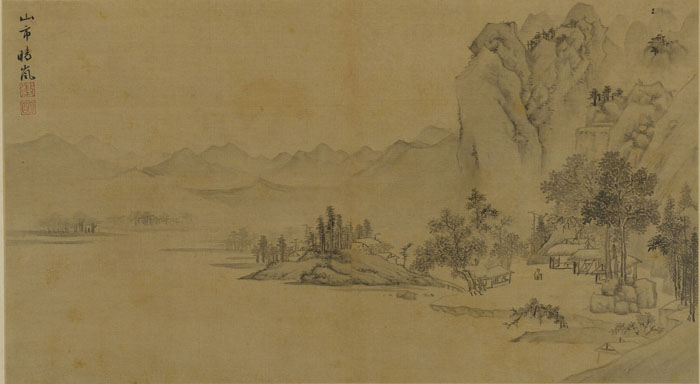
A detail of 'Eight Views of the Xiao and Xiang Rivers,' by Wen Zhengming, is from the 16th century Ming Dynasty (1368-1644) and is on loan from the Shanghai Museum. (photo courtesy of the National Museum of Korea)
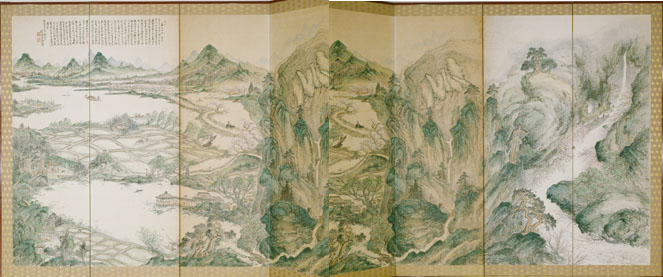
'Peach Blossom Spring of Wuling' (1904), by Tamioka Tessai, is from the Kyoto National Museum. (photo courtesy of the National Museum of Korea)
The fourth part of the exhibition portrays the life of scholars who leave the materialistic world behind and return to nature to seek refuge. The human embodiment of such a life, Tao Yuanming (365-427), wrote about the joy of returning home and restoring life. The "Ode on Returning Home" paintings are about the life of Tao. "Being in Nature is Better Than Holding Official Rank"/ "三公不換圖," by Kim Hongdo (1745-c. 1810), is an eight-piece folding screen, which, as the title explains, depicts beautiful images of nature that cannot be replaced in the human soul, even if awarded an official post.
The fifth part of the exhibit is about the kind of paradise sought in Taoism. The paradise described in Tao Yuanming's fable "The Peach Blossom Spring"/ "桃花源記," written in about 412, shows that a humble life is sought by many Taoists.
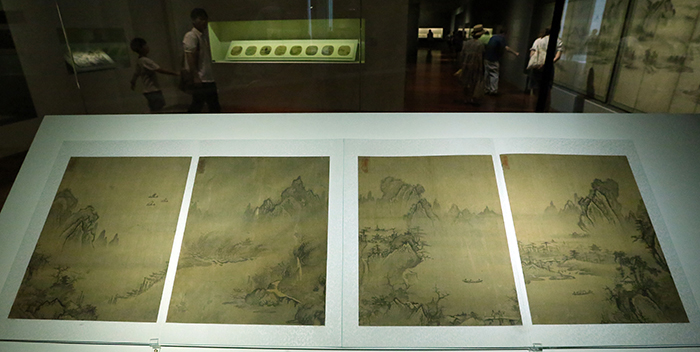
'Eight Views of the Xiao and Xiang Rivers,' by an unknown painter, is dated to the 16th century. (photo: Jeon Han)
"The current exhibit is a collection of renowned landscape paintings from museums across the world," said Kim Young-na, director of the National Museum of Korea. "By looking at the idealized life that society across East Asia portrayed in its paintings, I hope this will be a chance to think about utopia in our modern world."
The exhibit continues until September 28. Entrance is free. There will be Korean-language lectures concerning the artwork at 2 p.m. on both August 20 and September 3.
For more information, please call (02) 2077-9000 or visit the museum homepage: http://www.museum.go.kr/site/main/index002.
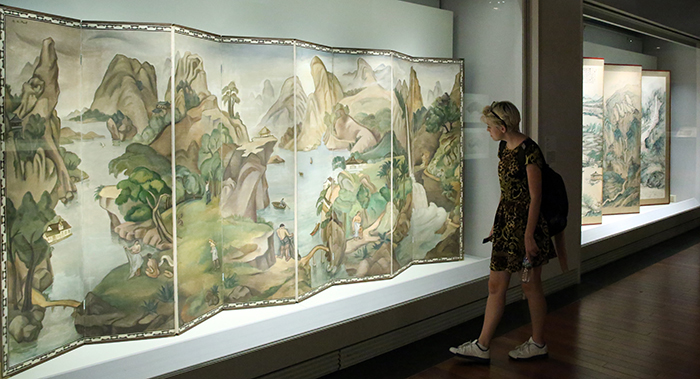
'Paradise' (1937) is by Baek Nam-sun (1904~1994). (photo: Jeon Han)
By Limb Jae-un
Korea.net Staff Writer
jun2@korea.kr
Related Contents
Most popular
- First hearing-impaired K-pop act hopes for 'barrier-free world'
- 'Mad Max' director impressed by 'cinema-literate' Korean viewers
- Romanian presidential couple visits national cemetery
- 'Korean mythology is just as wonderful as Greek and Roman'
- Hit drama 'Beef' wins awards from 3 major Hollywood guilds




